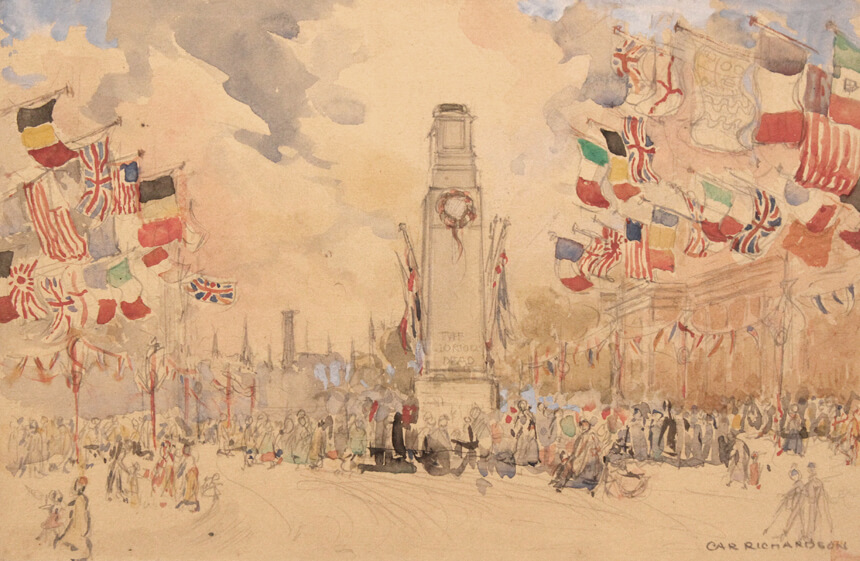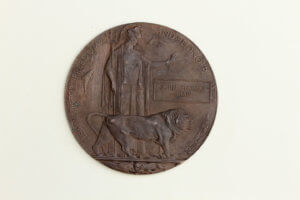Nostalgia: Looking back at how Amersham celebrated WW1 Peace Day in 1919
By Joanne Harris
To mark the end of World War I, the Government declared a Bank Holiday for a day of Peace celebrations to be held across the UK.
On Saturday 19 July 1919, a large rally took place in London, with more than 15,000 soldiers taking part in a Victory Parade to celebrate and mark the end of the war. A monument to the fallen and wounded was also unveiled at Whitehall on the day. Built in just two weeks, the monument was a temporary wooden structure later replaced with the Portland Stone which still stands today.

Local Peace Day Celebrations
In Amersham, locals opted to celebrate with a special dinner for soldiers and sailors, prepared and provided at St Mary’s School. The School was decorated by Amersham’s Ladies’ Committee and the meal was served by Mr Browning of the Crown Hotel with help from a team of volunteers.
The children of Amersham were also treated to a day of entertainment, including a Punch and Judy Show at a specially decorated Barn Meadow. Elderly residents from the Union and Day’s and Drake’s Alms houses were able to join in too. Tea was provided, and many were driven around in motor buses kindly given for the occasion by Amersham and District Motorbus Company.
Sadly, planned sporting events on the day and a carnival were, according to the report in the Bucks Herald on July 26 1919, ‘marred by the rain’. Despite the weather, a torchlight procession took place to a bonfire on Gore Hill to conclude the day’s celebrations.
Whilst not a popular decision with everyone at that time, with some believing money would be better spent providing for the wounded, many Peace Day events took place across Britain. Local communities were tasked with organising activities to recognise and celebrate their heroes.

Serving soldiers
Around 100 men from Amersham and the surrounding area lost their lives during WWI. Families of servicemen and women who died were sent a memorial plaque after the war, named ‘the Death Penny’ for its resemblance to coinage at the time.
Women at War
Women across the UK made significant contributions to the war effort; women set up and ran hospitals, factories, sciences labs, transport depots and anywhere else that freed up men to fight on the front.
Chancellor Lloyd George knew he would need to get an old foe on side and so gave suffragette Emmeline Pankhurst £2,000 to organise the ‘Women’s Right to Serve March’. And women everywhere answered that call. In Amersham and Chesham, suffrage campaigners played their part, putting on hold their campaign for the right to vote to provide vital services for the war and those at home.
Henrietta Busk, Amersham’s first female councillor was one of the women who stepped forward. She had a vital role in organising and coordinating hospital and convalescent provision, relief committees, aid for Belgium refugees and the care of orphaned children. After the war, she proposed a scheme for the creation of a Chesham Bois War Memorial dedicated to the fallen which was unveiled on 11 November 1920, the Amersham War Memorial was consecrated nearly 1 year later on 10 July 1921.
You can find out more about the role of women in WWI in the book, Women at War, written by local historian Alison Bailey with support from volunteers of Amersham Museum. The book explores the role local women played in WWI and the suffrage campaign. The book, supported by the Heritage Fund, is available at the museum and all profits support the museum’s activity programme and running costs.
